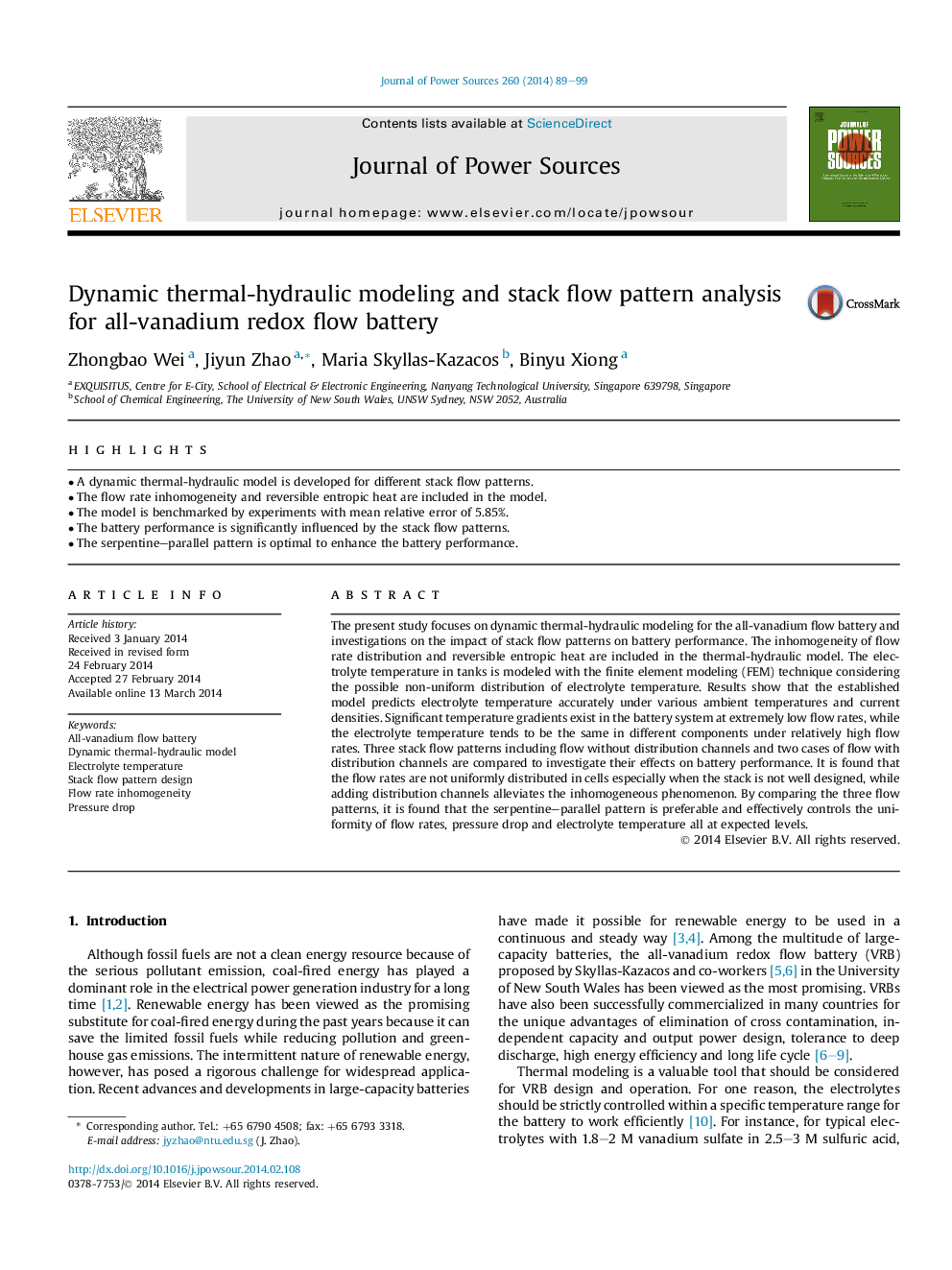| کد مقاله | کد نشریه | سال انتشار | مقاله انگلیسی | نسخه تمام متن |
|---|---|---|---|---|
| 1284161 | 1497972 | 2014 | 11 صفحه PDF | دانلود رایگان |
• A dynamic thermal-hydraulic model is developed for different stack flow patterns.
• The flow rate inhomogeneity and reversible entropic heat are included in the model.
• The model is benchmarked by experiments with mean relative error of 5.85%.
• The battery performance is significantly influenced by the stack flow patterns.
• The serpentine–parallel pattern is optimal to enhance the battery performance.
The present study focuses on dynamic thermal-hydraulic modeling for the all-vanadium flow battery and investigations on the impact of stack flow patterns on battery performance. The inhomogeneity of flow rate distribution and reversible entropic heat are included in the thermal-hydraulic model. The electrolyte temperature in tanks is modeled with the finite element modeling (FEM) technique considering the possible non-uniform distribution of electrolyte temperature. Results show that the established model predicts electrolyte temperature accurately under various ambient temperatures and current densities. Significant temperature gradients exist in the battery system at extremely low flow rates, while the electrolyte temperature tends to be the same in different components under relatively high flow rates. Three stack flow patterns including flow without distribution channels and two cases of flow with distribution channels are compared to investigate their effects on battery performance. It is found that the flow rates are not uniformly distributed in cells especially when the stack is not well designed, while adding distribution channels alleviates the inhomogeneous phenomenon. By comparing the three flow patterns, it is found that the serpentine–parallel pattern is preferable and effectively controls the uniformity of flow rates, pressure drop and electrolyte temperature all at expected levels.
Journal: Journal of Power Sources - Volume 260, 15 August 2014, Pages 89–99
